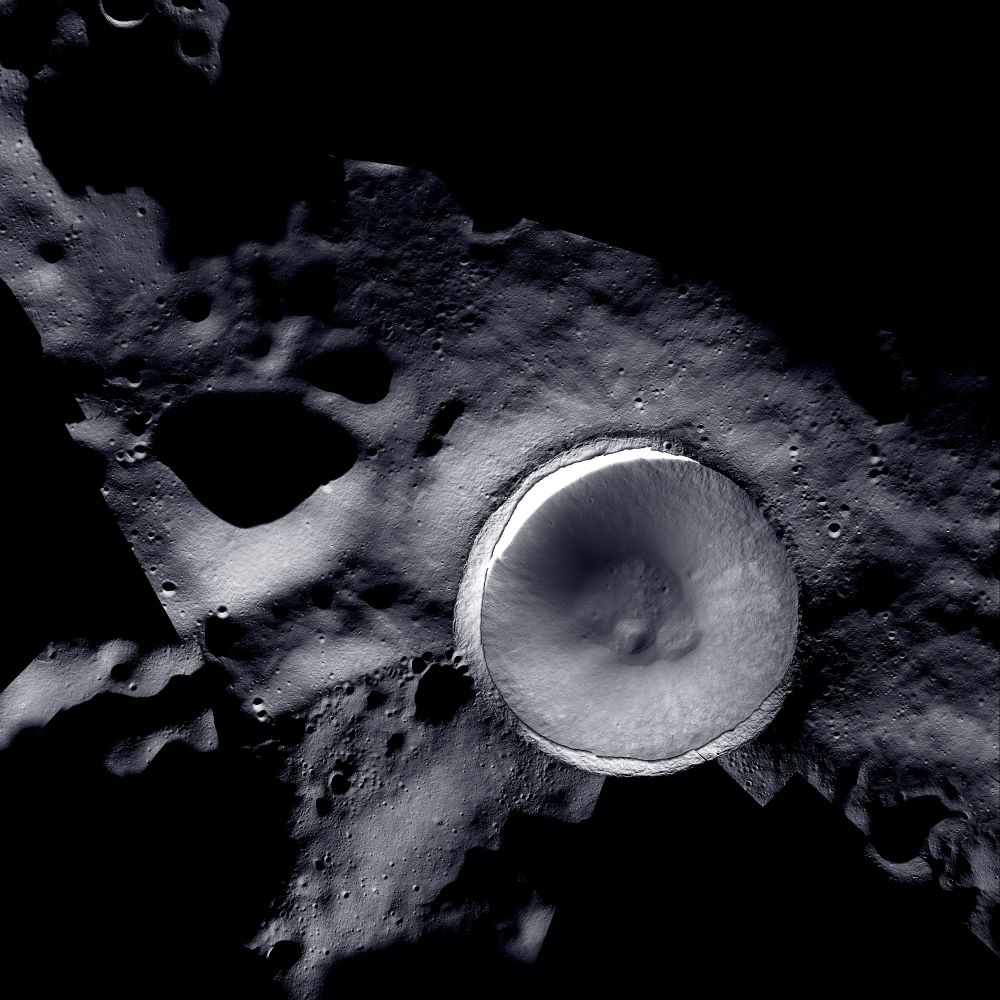Science
Related: About this forumThe Darkest Parts of the Moon are Revealed with NASA's New Camera
While the surface of the Moon has been mapped in incredible detail over the last several decades, one region has eluded orbital cameras due to the lack of sunlight, which are aptly called the permanently shadowed regions (PSRs) of the Moon. However, two cameras operating on two different lunar orbiters have recently worked in tandem to produce a stunning mosaic image of the lunar south pole’s Shackleton Crater, a portion of which resides directly on the lunar south pole and whose depths have been shrouded in complete darkness for possibly the last few billion years. As a result, scientists hypothesize that water ice could have accumulated within its dark depths that future astronauts could use for fuel and life support.
These two cameras are NASA’s Lunar Reconnaissance Orbiter Camera (LROC) mounted on the Lunar Reconnaissance Orbiter (LRO), and NASA’s ShadowCam that is mounted onboard the Korea Aerospace Research Institute’s (KARI) Danuri spacecraft, with each spacecraft having been in lunar orbit since 2009 and 2022, respectively, and each camera providing their unique capabilities to help construct this unique and first-time mosaic image.
LROC features two narrow-angle cameras (NACs) capable of capturing images at 0.5 meters per pixel and a wide-angle camera (WAC) that can capture 100 meters per pixel, which is how LROC has delivered thousands of high-resolution images of the Moon during its 13 years of service. Despite this, LROC is unable to take images that are not in direct sunlight. Enter ShadowCam, whose light sensitivity is 200 times greater than LROC and can capture details of the lunar surface that have remained unseen until now. It accomplishes this by capturing the reflected sunlight from the myriad of geologic features on the Moon or light from the Earth, also known as Earthshine. The downside is ShadowCam can’t capture images in direct sunlight, which is why images from both cameras were used to create this stunning mosaic, as ShadowCam was used to capture the unlit portions of Shackleton Crater, such as the interior walls and floor, and LROC was used to capture the sunlit portions, such as the flanks and rim of the crater.
 This new mosaic of Shackleton Crater on the Moon was obtained with a combination of images from NASA’s Lunar Reconnaissance Orbiter Camera (LROC) and ShadowCam. (Credit: Mosaic created by LROC (Lunar Reconnaissance Orbiter) and ShadowCam teams with images provided by NASA/KARI/ASU)
This new mosaic of Shackleton Crater on the Moon was obtained with a combination of images from NASA’s Lunar Reconnaissance Orbiter Camera (LROC) and ShadowCam. (Credit: Mosaic created by LROC (Lunar Reconnaissance Orbiter) and ShadowCam teams with images provided by NASA/KARI/ASU)
Continued at the link https://www.universetoday.com/163363/the-darkest-parts-of-the-moon-are-revealed-with-nasas-new-camera/
PJMcK
(22,890 posts)But by bit, we are learning more and more about our nearest neighbor in the Solar System. When we finally establish a Moon base we’ll start to move outwards off Earth.
There was a silly sci-fi film called Apollo 18, I think, where astronauts find alien life living at the bottom of a crater on the far side of the Moon that never gets sunlight. Don’t bother watching the film!